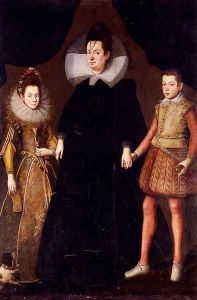Tiberio Titi Paintings
Tiberio Titi was a Florentine painter during the late Renaissance and early Baroque periods. He was born in Florence in 1573, into a period of great artistic ferment in the city, which was home to the Medici family, great patrons of the arts who played a vital role in the Italian Renaissance.
Tiberio Titi was the son of the renowned Italian painter Santi di Tito, who was a significant figure in the Counter-Reformation movement that sought to bring a sense of realism and emotional engagement back into religious art. Santi di Tito's work was a blend of the traditional Florentine style with the naturalism and chiaroscuro techniques that were becoming popular due to the influence of artists like Caravaggio.
Following in his father's footsteps, Tiberio received his artistic training in his father's workshop. Here, he would have been exposed to the principles of design, drawing, and the importance of depicting religious and mythological scenes with a sense of directness and clarity. Tiberio's own style was heavily influenced by his father's approach, but he also brought his own sensibilities to his works.
Titi's oeuvre includes religious compositions, portraits, and possibly some mythological scenes, although his body of work is not as well documented or as extensive as that of his father. His portraits are known for their elegance and attention to detail, and they provide an insightful glimpse into Florentine society at the time.
Tiberio Titi's career unfolded without the same level of acclaim as his father's, but he was nonetheless a competent painter who contributed to the artistic landscape of his time. He passed away in 1627 in Florence, where he spent the majority of his life and career. The legacy of the Titi family in the art world remains tied to the contributions of both Santi and Tiberio, reflecting the transition from the Renaissance ideals to the more emotionally charged and naturalistic tendencies of the Baroque period.
